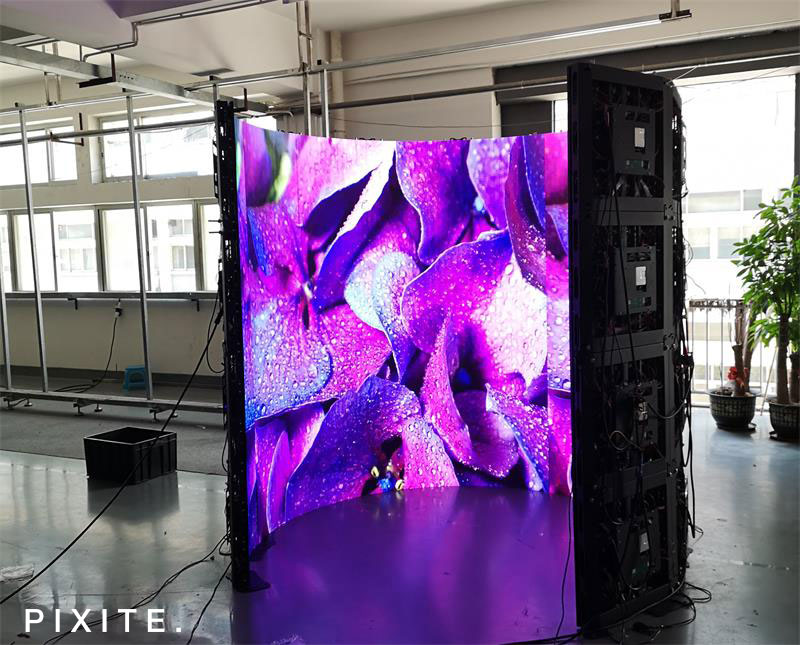The technology of LED screens has evolved rapidly over the past two decades, and it’s now commonplace to see flat digital screens everywhere from transport hubs to schools and health centres. However, the advancement of technology has now made the curved LED screen more relevant and effective in many environments.
Here’s a look at the advantages of installing a built-in curved LED wall display.
A better viewing experience
When installed in a cinema, a curved screen allows for a good viewing experience no matter what angle you are looking from. This means that people who are seated further away or to one side of the screen will be able to see equally well, with no distortion or need to hold their head or neck at an unnatural angle.
Even at a smaller scale, a curved TV screen can be beneficial in group situations, such as care homes, day centres, or even just to enjoy a better quality viewing experience when you are viewing with family or friends.
The more comfortable viewing arrangement can help to reduce eye strain and minimise glare and reflection that tends to be an issue with flat screens. This enhances the quality of the images and is more easeful for the eye.
More impact for advertising
It can be difficult to stand out in a crowded advertising space, and a curved screen can give your business the edge, so to speak. The curved LED wall display can be installed in a variety of settings, including the exterior of buildings to blend in seamlessly with the shape and flow of the architecture.
The LED technology can also be combined with transparent panels so that the screen causes no disruption to the facework of historic buildings or blocks light to the interior when it is not in use. The curved display wall can also be installed in shopping centres, street corners, or transport hubs.
The wider viewing angle means that the content will have greater audience reach and impact, maximising the advertising message without the need to invest in multiple displays.
Immersive environments
Curved LED video screens are ideal for creating immersive environments, such as art installations, simulation rooms, video gaming, or an exhibition stand or conference room presentation.
When used to create a simulated training environment, such as advanced driving skills or pilot training, curved screens can offer a more realistic experience that helps to improve the quality and effectiveness of the training.
For fans of video games, a curved screen can create a more satisfying experience, where the gamer feels right at the heart of the action without the need to wear cumbersome virtual reality headgear. This is also true of art installations where the artist or gallery curator wants to create a visually memorable and engaging viewer experience.
Space efficiency
Curved screens can make the most effective use of space, avoiding bulky flat-screen installations and freeing up space that can be used for better purpose. They can be seamlessly integrated into an existing environment, and bring a sleek and contemporary appeal besides all the aforementioned viewing benefits.
Curved screens are manufactured with the most advanced technology, so they are ultra thin and lightweight. This means that they can be installed and adapted to a much wider range of environments, and ‘wrapped around’ existing architectural features.
Creative potential
The screen itself can become a part of the display, or even the central feature. The curves can be used in a whole variety of configurations, and even used to create spheres, cylinders, tunnels, tubes, and waves of joined-up convex and concave screens. This novel use of LED displays captures the attention of audiences and maximises impact.
Curved LED screens are also increasingly used in film and video production for more advanced green screening techniques. The overall result can be more realistic and convincing when creating virtually simulated scenes, which is now a standard practice for live-action films to avoid extravagant location and set design costs.
Outdoor 3D billboards
Over the past couple of years, the ability to create highly realistic and convincing 3D LEd displays has seen some stunningly creative digital billboard installations. Now, the 3D technology can be combined with a curved screen for even greater impact at high-traffic locations such as Picadilly Circus in central London.

